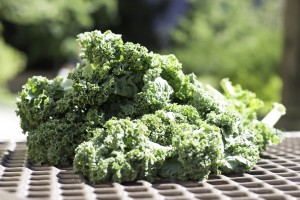
One of the biggest new marketing tools restaurants use is a simple “We Buy Local” sticker on the door.
With “Small Business Saturday” and nonprofits like “Local First Utah” that encourage people to shift from national chains to local, independent businesses, local food shopping is becoming a movement with steadily growing popularity. What does it mean? What are the effects on the wallet, health and taste buds?
Local foods are shipped from nearby farms, usually within 50 miles of the restaurant or retailer. They are usually from the farms selling produce and other goods at farmers markets. Locally grown food is noticeably different from other produce and has many key benefits.
Local foods are more delicious.
The difference between the salad mom made from her garden and the bagged Costco salad at a Christmas dinner should be easily recognizable. Tomatoes picked yesterday at Harward Farms in Provo will always taste better than tomatoes picked last week.
“You can taste the difference between when foods have traveled thousands of miles on the back of a truck and when it was just picked off of the tree that morning,” said Matt Pedersen, a finance major. “Whenever I hear that there is another option besides the grocery store to buy fresh produce from local farms, I try to shop there.”
Local foods are healthier.
Produce that travels for a long period of time is heavily exposed to extreme temperatures and sunlight. This lessens the nutritional value and ages the product. The average distance produce travels is 1,500 miles, causing it to appear and taste different from the moment it was picked.
Local foods are seasonal and more diverse.
Few people crave watermelon in the middle of January, or pumpkin in mid-July. Different foods grow during different parts of the year; therefore, eating foods out of season can taste mediocre and can be much more expensive. When a restaurant adapts to different seasons, its menu changes constantly and its ingredients diversify. This makes eating out a unique, delicious experience.
“I always love it when restaurants change their menu seasonally,” said Kirsten Hansen, an advertising major. “You always know the food is fresh, and the choices fit what you’re craving.”
Local foods aren’t as expensive.
Many people see brands other than the usual Kroger and Safeway and assume the price must be double, but that is not necessarily the case. Although smaller, local farms may not have the resources or equipment to pump out thousands of items for wholesale prices, their transportation costs are low to none, making the product less pricey than perceived.
Local foods build the community.
Supporting a restaurant that buys local foods supports local farmers, who employ members of the community. This chain can reach a lot of people, and when all of this happens, the tide rises and everyone’s boats go up. Many are getting to know farmers at the local market and ask them questions about the production of the foods. Restaurants that support local farms also build stronger roots in the community and can have more success.




